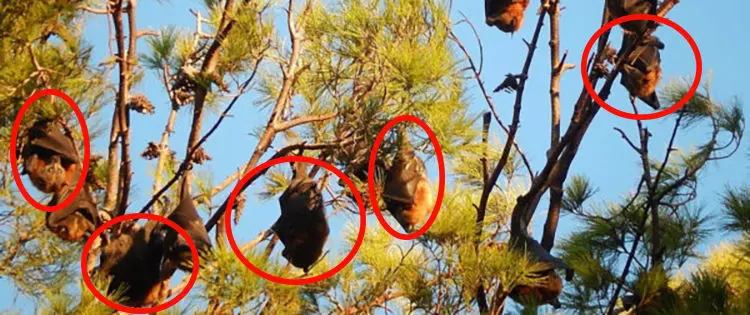We’ve all heard many stories about bats: they attack people, drink human blood, and build nests in your hair!
Despite these unpleasant myths, and also the fact that they are not the most beautiful animals to have around, bats are beneficial to the ecosystem. What are these benefits, and what can you do if you have bats on your property?
Insect Control
Many bat species are Microchiroptera (i.e., insect-eaters). They help reduce the insects on your property and save money spent on pesticides, especially for gardeners and farmers. It is said that one bat can devour over 1,000 mosquitoes in one night and many bats enjoy eating beetles that damage your gardens and crops. Imagine you want to spend the night relaxing out in your backyard, surrounded by hundreds of hungry mosquitoes, and no bats around. So if you find one, don’t kill it.
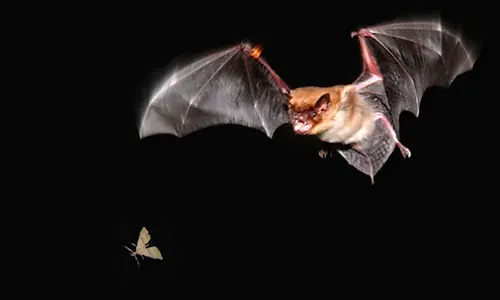
Pollinators
Bats enhance your plant production. There are some bat species in some areas of the world that routinely eat nectar. They transform pollen from one plant to another which helps produce even more plants right in your backyard.
Seed Dispersal
New plants and forested areas flourish from seed dispersal. The fruit-eating bats distribute seeds to help maintain plant and forest growth. While eating the fruit, the bats excrete the seeds away from the original source. So you might want to consider having bats around your plants.
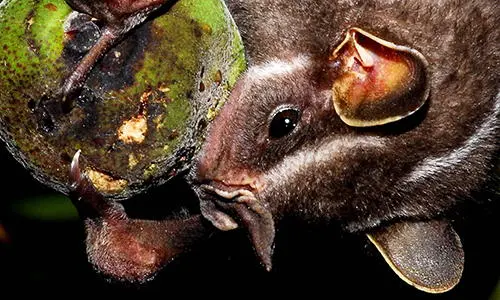
Prey
Several animals in the ecosystem prey on bats for their daily meals. Mammals such as raccoons, ring-tailed cats, and weasels eat the bats while they are roosting. Hawks, falcons, and owls consume their share of bats in-flight.
The bats come in handy when there are unwanted invaders in your backyard or around your homestead. They feast on rodents and smaller birds which are nuisances to your garden, crops or home.

Guano
Bat guano enriches the soil: it improves the texture and drainage, controls nematodes, and acts as a natural fungicide.
Guano also makes an excellent fertilizer for your lawn or plants to make them greener and healthier. It is high in nitrogen and phosphorus, fast-acting, and has little odor. Compared to other types of manure, guano is applied in smaller quantities. If you are using it for your plants, the guano can be worked into the soil before planting or at any time during the growing process. It can be made into tea and used with regular watering practices for deep root feeding or used fresh or dried.
Also, guano speeds up the decomposition process when composting to create nutrient-rich compost.
Related: The Ultimate Guide To Composting
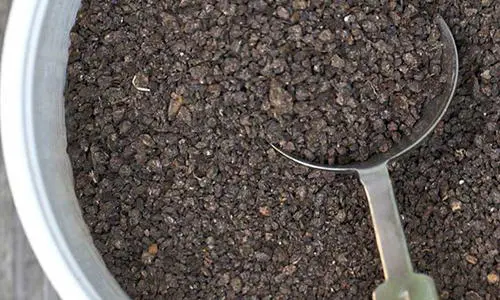
Nesting Locations
As today’s buildings become better-constructed, bats and other wild creatures tend to lose their nesting spots. Since bats play such a significant role in natural pest control, it’s essential that we help to protect them and encourage nesting on our property.
One way to accomplish this is with a bat house. You can build your own house or buy one at a hardware store/bird store. There are several guidelines to ensure attracting bats (a typical bat box can host up to 50 brown bats).
- Place close to water source
- Locate at least 15 feet above ground
- Face the sun (full sun is best) for most of the day
- Be in darkened area at night
- Have rough inside for clinging

A Bat In Your Attic. Now What?
 If you have bats in your attic, you are not alone.
If you have bats in your attic, you are not alone.
Maybe you see them entering and exiting your house, or you might smell their odor. And since they are nocturnal, you might hear them crawling around and squeaking in your ceiling or walls at night.
Since bat colonies multiply over time, it’s not unusual to have colonies of 100–1,000+ bats in one attic!
Bats can be health risks because their droppings grow fungus and cause respiratory problems. Their guano and urine can have a bad smell and cause structural damage to your house by corroding the drywall and damaging the ceiling and walls. And depending on how long the bats have enjoyed your attic space, you might need to deal with decomposing bats.
So, how do you get rid of the bats? Well, there are several humane methods that you can try yourself. None of these involve chemicals or poisons. In fact, it is often illegal to harm bats because of their value to the ecosystem.
Since the females give birth to the pups in late April to early June, bat removal should not occur during the summer months; the babies can’t fly until the end of August. You need to wait until winter. Bats hibernate when the temperatures remain around 35–40° F. If your attic temperature is colder, the bats are likely to relocate. Then you can seal up the entry and exit areas.
However, if your homestead is in a climate that has mild temperatures throughout the year, you may have bats remaining year-round. For this situation, after finding the entry points (look for piles of guano and a large amount of urine stains around the ridge caps, louvers, vents, and fascia boards; examine broken windowpanes, warped boards and siding, missing bricks, and any small gaps/openings), then you can use exclusion devices that attract the bats out of the attic. Place a device on each opening. Remember, bats can get into an opening of about 3/8 inches.
A typical exclusion device is a piece of 1/3 inch poly netting. This can be regular window screen purchased at a hardware or home building/supply store. Select the softest net so you can bend it more easily and it will be less harmful to the bat if a wing should get caught. Cut the net to fit and hang about a foot below the exit point on your house. Fasten with duct tape, a staple gun, or screws at the top and sides but allow the bottom to remain open. Mount with a downward angle to allow the bats to fly out but not fly back in. Leave up for several weeks.
When all the bats have vacated, you can take the screen and set it near your bat house or in an open area on your property. Next, it’s time to seal the openings. Use polyurethane foam with a foam gun to control the flow. Another product to use is a regular caulk; an all-weather rubberized kind is recommended. Squeeze into the cracks and gaps. If there are loose boards, bricks, or roofing, replace or securely attach.
Finally, it’s time to clean up. Examine your attic for signs of guano, urine, or hair. Be sure to wear protective gear (eye wear, a face mask, and rubber gloves) to protect yourself from any mold. Spray the fecal matter with a 10% bleach solution. Put the droppings into a heavy-duty plastic garbage bag. Be careful as the droppings are fragile and can turn into dust when touched. Sweep the smaller, broken pieces into a pan using a small plastic hand broom. Then throw away the broom and pan. Spray the area with an enzyme-based, deodorizing disinfectant so it poses limited or no health dangers.
Now, you can enjoy sharing your homestead with bats knowing that they are a strong contributor to your well being, and that you have provided an appropriate home (a bat house) for them. That’s not a myth!
You may also like:
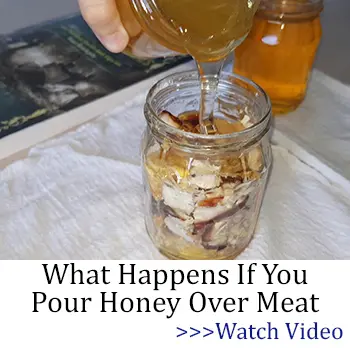 10 Bugs You Should Never Kill In Your Garden
10 Bugs You Should Never Kill In Your Garden
This Bug Will Kill Most Americans During The Next Crisis (Video)
What Foods Can You Bury Underground For Winter?

